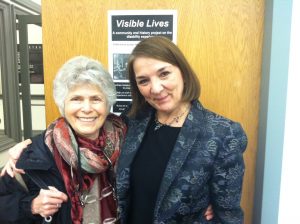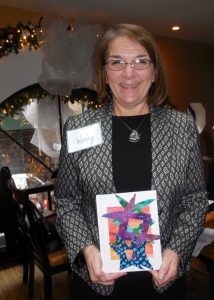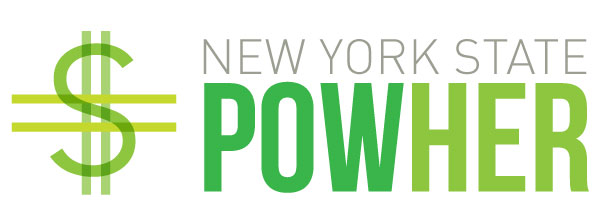Comfortable Diversity
I was once asked (directed) by a boss of mine not to use the words “race” or “gender” while facilitating diversity and inclusion education for the organization’s employees. The main reasons I was given for this approach were:
1. There are all types of diversity: job title, geographic location, marital status, parental status, we don’t have to focus on the obvious differences.
2. According to Dr. R. Roosevelt Thomas (the late diversity scholar and author of Beyond Race and Gender: Unleashing the Power of Your Total Work Force by Managing Diversity; AMACOM, NY, NY. 1991.), “Employees differ not just on the basis of race, gender, and ethnicity, but also on a variety of other dimensions such as age, functional and educational backgrounds, tenure with the organization, lifestyles, and geographic origins, just to name a few.” Dr. Thomas was absolutely right, but that does not mean that any dimension of diversity should be avoided when trying to create an inclusive environment.
3. If the training focuses on race and gender, it might make our people uncomfortable.
I was also told, in other terms, that we were living in a post-racial society and that there was no reason to dredge-up the past and make people feel guilty about things that they could not control.
Today, as we celebrate the birthday of Dr. Martin Luther King, Jr., and contemplate his legacy and the history of race in our nation, it is impossible for me to understand the claim that we live in a post-racial society when there are so many racially based challenges that we face every single day.
No Pain No Gain
Many people have begun the New Year by trying to live healthier lives. They have started to exercise, possibly after a long period without doing so. If this is the case, underused muscles will be aching in response to the pressure to participate in this healthy activity. If one is out of shape and overdoes it, then it can become too painful to continue and make progress toward better health. (I will confess that as I write these words, more than a few of my neglected muscles are groaning in response to my recent attempts to include all of my interdependent parts in goal oriented exercising.)
To continue with the exercise metaphor, much of the diversity training of a few decades ago was also a bit painful because of neglect, particularly when trainers would overdo it. So, the tendency might be to cringe at the thought of working out when lingering pain from the last effort reminds us how uncomfortable exercise can be. This certainly makes sense. That is why it is wise to begin a regimen of exercising carefully, mindful of old injuries, weaknesses, and risks. While there is going to be some inevitable discomfort, it does not need to be debilitating.
Beyond Trends and Fads
Just as with zumba, and other forms of exercising, fads and trends come and go, but three basic methods remain at the core of a healthy physiological program: reaching a targeted heart rate for your age and condition (cardio or aerobics), stretching, and strength. Similarly, effective methods for reaching sustainable inclusion goals require energy, stretching one’s ability to communicate and connect, and improving an organization’s cultural strength, or interdependence. These may initially cause participants some discomfort, but with time they will grow and expand their capacity to be truly inclusive. Just as anyone beginning an exercise regimen is advised to see their doctor to make sure that they are not causing themselves any harm and if they can afford it, they should hire a professional trainer to guide them. Likewise, it is recommended that your organization reach out to an experienced guide before embarking on an inclusion campaign.
One Step at a Time
Just as we are advised to begin an exercise plan by walking – simply walking before we start running – I recommend that we begin by talking. Conversations that have the goal of creating empathy in spite of diversity can help us to acknowledge our common history and distinct positions. In other words, let’s not be polite; let’s have genuine conversations that result in real relationships. Conversations that are grounded in mutual respect and the understanding that every one of us has a unique perspective – a unique set of experiences – can result in sustainably inclusive relationships. Conversations that are facilitated in a safe environment where respect is the primary requirement can be the first steps that move our homes, our schools, our workplaces, our cities, and our nation in a direction of healing and sustainable or manageable health.
Setting Realistic Goals
Just as exercising and dieting goals need to be realistic and practical, inclusion goals, if they are to be sustainable, must also reflect our current state and condition regarding diversity and inclusion. That requires an honest assessment and a well thought out plan. Dr. Martin Luther King, Jr. did not just show up in Selma, Alabama and expect racism or the denial of civil rights to end. He worked with others and developed a well-thought out plan and still met with incredible resistance before he and all of those who fought for our civil rights advanced that goal. That success enables and encourages all of us to continue to walk, to continue to strive to achieve our goals of inclusion, of equity, of humanity.
If you have not begun to advance your goals of inclusion, isn’t today a great time to begin?
Onward!
~ Wendy
Please let me know what you think! wendy@inclusionstrategy.com










